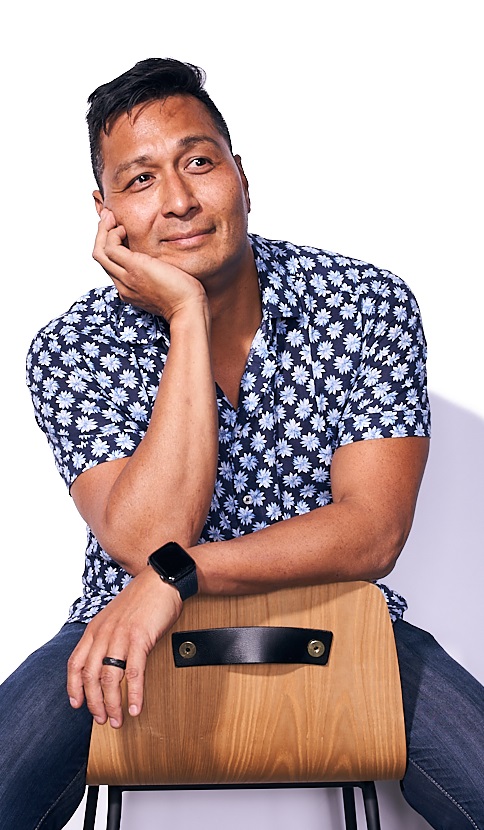Bringing Order to Title: How the Cowichan Decision Treats Indigenous Oral History and Legal Orders
August 28, 2025 Blog / Indigenous Law

October 2025 Update
The City of Richmond filed an appeal of the Cowichan Nation decision in September 2025, and the Province of British Columbia has indicated their intention to follow suit. The Musqueam Indian Band and Tsawwassen First Nation have also filed appeals.
Recently, around 125 Richmond homeowners received an alarming letter from Richmond Mayor Malcolm Brodie concerning the decision. The letter invites homeowners to attend an information session at Richmond City Hall on October 28, 2025, to understand the decision and discuss its implications. The letter states that homeowners’ titles could be negatively affected by the decision and that the decision “may compromise the status and validity of your ownership”. Mayor Brodie has made public statements that Aboriginal title contradicts fee simple ownership.
Merle explains that the decision provides legal clarity as to Cowichan Nation’s title that can guide a negotiated outcome between the Province, Canada, and Cowichan on how to reconcile the various interests within the title lands, including fee simple interests. He notes that the case and current case highlights that fee simple and aboriginal title can co-exist and that the private landowners’ fee simple interests continue to exist in the Cowichan Title Lands.
He points out that there are already government-to-government agreements between BC and First Nations that set out legal clarity that fee simple and Aboriginal titles can co-exist, for example, in the recent Haida Title Lands Agreement. The Haida agreements state that “the Haida Nation consents to and will honour fee simple interests, including those held by the Haida citizens.” And again: “The Haida Nation consents to fee simple interests on Haida Gwaii continuing under British Columbia jurisdiction.”
Merle emphasizes that if an appeal court affirms the decision, whether at the BC Court of Appeal or the Supreme Court of Canada, it will likely send the parties back to negotiate anyway – so appealing the decision risks extending legal uncertainty for years rather than simply negotiating a just settlement now.
If you have any questions about how the Cowichan Nation decision affects fee simple interests, please contact our Indigenous Law Group.
Find Merle’s comments for the CBC and Global TV through the links below.
CBC: https://www.cbc.ca/player/play/video/9.6945811
Global TV: https://www.youtube.com/watch?v=-dc_RbmJw5s
Cowichan Tribes v Canada (Attorney General), 2025 BCSC 1490 (“Cowichan”) is one of the most consequential Aboriginal title decisions in British Columbia in recent history. In Cowichan, the Court grappled with numerous issues, and among them is a question that has animated the jurisprudence for nearly three decades: how should courts treat Indigenous oral histories and Indigenous legal orders when adjudicating Aboriginal title and rights?
This blog post endeavours to provide analysis on how the Court in Cowichan dealt with this question, examine the critiques raised by the Musqueam Indian Band (“Musqueam”), who opposed the historic Cowichan Nation’s applications for declarations of Aboriginal title and rights, and the potential implications moving forward.
The Parties Positions
The historic Cowichan Nation (“Cowichan Nation”) asserts they historically occupied the Lands of Tl’uqtinus[1] on the south arm of the Fraser River and therefore seek declarations of Aboriginal title to portions of those lands and a declaration of an Aboriginal right to fish the south arm for food independent of any permission from Musqueam.[2] Musqueam, by contrast, challenges Cowichan Nation’s title claim and maintains that Cowichan Nation needed Musqueam’s permission to fish there, a position rooted in Musqueam’s long-asserted rights and interest in the north and south arms of the Fraser River and Musqueam’s recognized food, social, and ceremonial fishery.[3] Musqueam opposed Cowichan Nation’s application for declarations because granting them would recognize Cowichan Nation’s title and standalone fishing rights within areas Musqueam claims and regulates.[4] Musqueam argued such outcomes would prejudice its asserted claims and section 35 rights on the Fraser River.[5]
Oral Histories
Background: The Legal Landscape
The Supreme Court of Canada has long signalled that courts must adapt the rules of evidence to accommodate Indigenous oral histories. In R v Van der Peet, 1996 CanLII 216 (SCC) (“Van der Peet”), the Supreme Court of Canada held that the common law rules of evidence should be adapted to take into account the sui generis nature of Aboriginal rights.[6] In doing so, the court recognized the inherent difficulties in bringing forward Aboriginal rights and title cases, as well as the inherent features of oral histories that would count against their admissibility and weight if courts took a traditional approach to the rules of evidence.[7] In Delgamuukw v British Columbia, 1997 CanLII 302 (SCC) (“Delgamuukw”), the original trial judge ruled on both the admissibility and weight of oral history evidence without the benefit of Van der Peet. As a result, the trial judge had general concerns with the oral history evidence and gave them no independent weight. On appeal to the Supreme Court of Canada, the court remarked:
The implication of the trial judge’s reasoning is that oral histories should never be given any independent weight and are only useful as confirmatory evidence in aboriginal rights litigation. I fear that if this reasoning were followed, the oral histories of aboriginal peoples would be consistently and systematically undervalued by the Canadian legal system, in contradiction of the express instruction to the contrary in Van der Peet that trial courts interpret the evidence of aboriginal peoples in light of the difficulties inherent in adjudicating aboriginal claims.[8]
The Supreme Court of Canada held that the law of evidence must adapt to allow oral histories as proof of historical facts to be accommodated and placed on an equal footing with the types of historical evidence the courts are familiar with. Further, the Court held that this process must be undertaken on a case-by-case basis.[9] This approach was later affirmed in Mitchell v MNR, 2001 SCC 33 (“Mitchell”), where the Court noted that oral histories should not be undervalued but neither “artificially strained to carry more weight than [they] can reasonably support.”[10] Oral history evidence should be placed on equal footing and given due weight.[11] That said, Mitchell also provided more clarity that oral histories are admissible where they are both useful and reasonably reliable, and subject to the trial judge’s exclusionary discretion.[12]
Cowichan Application
In Cowichan, Justice Young acknowledged that oral history evidence can be accommodated and placed on equal footing with more traditional forms of evidence and that oral history evidence can be given independent weight and is assessed on a case-by-case basis.[13] This aligns with the case law noted above in Van der Peet, Delgamuukw, and Mitchell.
Justice Young also relied upon Justice Zinn’s comments on approaching oral history evidence in Jim Shot Both Sides v Canada, 2019 FC 789,[14] and Justice Phelan’s in Watson v. Canada, 2020 FC 129[15] that documentary evidence deserves considerable weight when supported by oral history evidence.[16] In light of the above noted case law, Justice Young stated:
I am cautious to avoid treating oral history as inferior to documentary evidence. Uncontradicted oral history deserves as much weight as uncontradicted documentary evidence and generally does not require corroboration. When oral history is challenged, documentary evidence may assist in determining how much weight should be given to the oral history. The opposite is also true. These are general principles only, as oral history must be assessed on a case-by-case basis.[17]
It is with this lens that Justice Young endeavoured to assess, weigh, and contextualize the oral history evidence presented from both the Cowichan Nation and Musqueam.
Oral History Evidence
One of the many reasons why this case is so impactful is the considerable amount of oral history evidence that was presented by the Cowichan Nation and Musqueam, Justice Young’s application of oral histories, and the interaction and tension between the different oral histories.
The volume of oral history evidence between the Cowichan Nation and Musqueam differed. The Cowichan Nation had eight individuals testify with oral history evidence, whereas Musqueam introduced three. The Court provided an overview of the oral history evidence from these individuals, which can be found at Part 3 of the decision, and their oral history evidence can be found throughout the decision.
Justice Young applied the aforementioned legal framework, developed over decades of jurisprudence, to each of the witnesses’ oral histories. In the oral history overview, Justice Young provided an overview for each of the witnesses and assessed the reliability of the oral history evidence they provided. The assessment of the weight the court prescribed to different aspects of the oral history evidence can be found throughout the decision. At different points in the decision, the court states exactly what oral history and direct evidence was relied upon, such as that of highly respected Cowichan elder Florence James (Thiyuas/Thiyuasulwut), who is referred to in the decision as Mrs. James.[18]
In examining how the Court in Cowichan treated oral history evidence, it is particularly important to pay attention to how Justice Young integrated oral history evidence with the documentary, ethnographic, cartographic, and expert evidence. In Delgamuukw, the Supreme Court of Canada cautioned against oral history evidence not being given independent weight and being treated as only useful as confirmatory evidence. While this approach was avoided here, it remains important to examine the interplay between the various sources of evidence.
An illustrative example of this interplay is the court’s analysis of early European accounts. Justice Young inferred that the people seen by the Spanish explorers around Porlier Pass in June 1792 were Cowichan because that matched Mrs. James’ and Luschiim’s oral history evidence about Cowichan villages on Valdes and Galiano. Justice Young expressly stated this conclusion was reached by combining the oral history with the historical record.[19] This interplay can also be seen when Justice Young used oral and ethnographic evidence to conclude that the Cowichan Nation cleaned and dried their fish at the waterfront of their village lands.[20] When oral history evidence was uncontradicted, such as the traditional practice of cold water bathing and cooking using pits at the beach as described by Mrs. James, Justice Young accepted this evidence and made the necessary inferences.[21]
However, not all oral history evidence was accepted. When oral history evidence contradicted or did not align with the other evidence before the court, Justice Young declined to accept that evidence. By way of example, Musqueam advanced evidence, including oral histories from respected Musqueam individuals, that it controlled access to the south arm of the Fraser River and that Cowichan Nation fished there by permission from hən̓q̓əmin̓əm̓-speaking kin.[22] The Court found this fell short because it conflicted with the overall record and expert evidence that no single Nation could practically control such abundant runs;[23] there was no proof of permanent hən̓q̓əmin̓əm̓-speaking villages on the south arm of the Fraser River (only campsites, which create no proprietary interest);[24] and some “control” features were not pleaded.[25]
Overall, Cowichan largely follows the course set by Delgamuukw. Consistent with the principles outlined early in the decision, Justice Young treated uncontradicted oral history evidence with the same weight as uncontradicted documentary evidence. Where oral history aligned with documentary, ethnographic, cartographic, and expert evidence, it was afforded substantial weight. Where contradictions arose, other forms of evidence guided the court in determining whether to accept the oral history and how much weight to assign it.
Indigenous Legal Orders
Another reason Cowichan is an impactful decision is the consideration that Justice Young gave to Coast Salish legal orders, how they shaped relations to the land and water, and how the Cowichan Nation, Musqueam, and others understood them. Within the decision, there are two predominant areas in which Indigenous legal orders were considered: at Part 5(C)(8), where the court outlined Central Coast Salish property law, and Part 10(E)(2)(c), where the court used Coast Salish laws in fishing protocol.
In Part 5, the Court begins by describing how Coast Salish law treats property in concrete, everyday ways. Historically, families owned house sites, planks, and built structures like houses and smokehouses.[26] The Cowichan Nation submitted that under Central Coast Salish and Cowichan Nation customary law, a “resident group held a common proprietary interest in the lands and water around their village.”[27] Moreover, the Cowichan Nation had proprietary interest over Tl’uqtinus that other Nations like Musqueam recognized.[28] This recognition came from Cowichan Nation’s dominance as evidenced by acts such as going to a Musqueam village and cutting the head of the Chief off.[29]
Musqueam disagreed and advanced its own oral history evidence from Morgan Guerin, who spoke to the governance practice of regulating people coming over to Musqueam territory and requiring permission to enter the territory as a sign of respect.[30] Musqueam submitted that the hən̓q̓əmin̓əm̓-speaking people of the lower Fraser River had a proprietary interest in the Claim Area[31] and Tl’uqtinus.[32]
After weighing the competing accounts from Cowichan Nation and the Musqueam, Justice Young found no evidentiary basis for Musqueam’s position. Justice Young concluded that the hən̓q̓əmin̓əm̓-speaking people did not have permanent villages on the south arm, only campsites. Justice Young was not persuaded by Chief Sparrow’s oral history and the ethnographic evidence was mixed as to whether Garry Point was a Musqueam village or campsite.[33] Justice Young held that under Coast Salish and Cowichan customary property law, villages were collectively owned, and that Cowichan “had a recognized proprietary interest in the lands and waters in the vicinity of their village at Tl’uqtinus.”[34]
Musqueam Critique
Musqueam has publicly disagreed with the decision. In a news release on August 8, 2025, Musqueam says the court gave little weight to Musqueam oral history evidence and perspectives, while giving primacy to settler journals and maps interpreted through the lens of non-Indigenous experts.[35]
Throughout the decision, Musqueam critiqued the oral history evidence of Cowichan Nation. For instance, Musqueam raised concerns with Luschiim’s understanding of Tl’uqtinus, stating that it was based on a story that was told during a meeting between a Musqueam elder and Luschiim’s great-grandfather. Musqueam characterized this evidence as temporally open-ended, lacking in detail, and urged the court to assign it little weight.[36] The Court did not accept this submission.[37]
Another instance is Musqueam’s position on Garry Point, which the Musqueam know as q’weyaʔXw.[38] Garry Point sits at the mouth of the south arm; the Claim Area lies upstream along the south shore of Lulu Island (Richmond) and is outside of Garry Point. Musqueam relied on Garry Point, among other sites, to show presence on the south arm at the same time as the Cowichan Nation.[39] Musqueam advanced oral history evidence that the Point family lived at q’weyaʔXw and would come to the main village on the north arm of the Fraser River during the winter.[40] Importantly, the Cowichan Nation submitted that this oral history evidence refers to a time period post-colonization. In light of the conflict regarding the oral history evidence, Justice Young turned to other sources of evidence, such as an account from the Indian Agent Frank Devlin, the Truth survey, and testimony from Dominic Point in Mathias v The Queen, 2001 FCT 480.[41] Justice Young concluded that there was more support for the Cowichan Nation’s position that people who were part Sumas, part Cowichan, and part Musqueam used Garry Point as a campground and did not build permanent homes until the late 1800s.[42]
Musqueam also critiqued the written accounts of three Hudson Bay Company Officers–George Barnston, James McMillan, and Archibald McDonald–in the 1827 to 1830 Fort Langley journals. Musqueam submitted that the term “Cawaitchens” and “Cowichan” was sometimes used inaccurately and in an overly broad sense.[43] Justice Young accepted that the February 26, 1829, entry and the copies sent back to the Hudson Bay Company executives support their position. However, Justice Young reviewed the other journal entries and determined that Barntson, McMillan, and McDonald made distinctions between various Indigenous groups and did not accept Musqueam’s submissions.[44]
Takeaways
Cowichan has followed the decades of jurisprudence that came before it, tracing back to Delgamuukw, and it has progressed that jurisprudence forward. The Supreme Court of Canada in Delgamuukw explicitly expressed concern about the treatment of Indigenous oral histories if they were not accommodated for and placed on equal footing with traditional forms of evidence; Indigenous oral histories must be given independent weight. If Indigenous oral histories are not given independent weight, there is the real risk that Indigenous peoples would be consistently and systematically undervalued by the Canadian legal system. Justice Young heeded this warning and gave Indigenous legal orders independent weight, and at times used other forms of evidence in conjunction to bolster their weight.
However, a tension arose that is unique to this case when two Indigenous oral histories conflicted with each other. In light of this conflict, at times, Justice Young relied on other sources of evidence to situate and assign weight to the oral history evidence. In doing so, when conflict arose, the court used Indigenous oral histories as confirmatory evidence by examining them against the other sources of evidence available. As a result, Musqueam put forward a public statement denouncing the decision and criticizing Justice Young’s approach to the oral history evidence. In other words, Musqueam felt their oral history evidence was undervalued by the Canadian legal system, which is exactly what the Court in Delgamuukw was aspiring to avoid.
Similarly, a unique tension arose concerning the application of Coast Salish legal orders. For instance, Cowichan Nation and the Musqueam generally agreed on the operation of Coast Salish law for accessing resources-based, kinship-based permissions.[45] However, they disagreed on the application of this law to the lower Fraser River and the Claim Area. Again, in light of this tension, Justice Young relied on other sources of evidence to make a determination.[46] The Courts are in a difficult position in this tension. The Court has recognized that it “is not defining the boundaries of Indigenous legal orders themselves, nor could it” but at the same time will need to develop an approach to resolving conflicts between legal orders in a way that does not result in them being misapplied nor undervalued by the Canadian legal system. Nations also have a role to play, as Musqueam has aptly pointed out. Do Nations come together ahead of time to resolve conflicts, particularly those concerning Indigenous legal orders and their application, or do they turn to the Canadian court system to do that?
Cowichan underscores the need to come to courts with a robust and diverse evidentiary record. The Court treated Indigenous oral histories as independent proof and, where uncontradicted, accepted them without demanding corroboration. Where Cowichan Nation and Musqueam oral histories or legal orders pulled in different directions, the Court checked each against the documentary, ethnographic, cartographic, archaeological, and expert record.
Want more?
If you have any questions or comments relating to what we discussed above, feel free to reach out to our Indigenous Law Group.
[1] Tl’uqtinus is the Cowichan Nations’ traditional village and surrounding lands on the south arm of the Fraser River, which they describe as their stl’ulnup, meaning their sacred ancient homelands. Cowichan Tribes v Canada (Attorney General), 2025 BCSC 1490 at para 1 [Cowichan]
[2] Ibid at para 1.
[3] Ibid at paras 25, 27 and 3159.
[4] Ibid at paras 25 and 27.
[5] Ibid at para 3524.
[6] Delgamuukw v British Columbia, 1997 CanLII 302 (SCC)at para 3 [Delgamuukw].
[7] Ibid at para 86.
[8] Ibid at para 98.
[9] Ibid at para 87.
[10] Mitchell v MNR, 2001 SCC 33 at para 39 [Mitchell].
[11] Ibid.
[12] Ibid at para 31.
[13] Cowichan, supra note 1 at para 89.
[14] Ibid at para 91.
[15] Watson v. Canada, 2020 FC 129 at para 77.
[16] Ibid at para 92.
[17] Ibid at para 93.
[18] Ibid at para 677.
[19] Ibid at para 3256.
[20] Ibid at para 1631.
[21] Ibid at para 1632.
[22] Ibid at para 3405.
[23] Ibid at paras 1528 and 3484-3485.
[24] Ibid at para 1233.
[25] Ibid at paras 1443-1444.
[26] Ibid at paras 1187-1188.
[27] Ibid at para 1196.
[28] Ibid at para 1222.
[29] Ibid at paras 1287 and 1289.
[30] Ibid at para 1228.
[31] Claim Area refers to the whole litigation footprint: 1,846 acres of land on the south shore of Lulu Island (Richmond) plus the surrounding lands held by Richmond and Canada as described in Schedule A of Cowichan
[32] Cowichan, supra note 1 at para 1231
[33] Ibid at paras 1233 and 1471.
[34] Ibid at para 1240.
[35] Odette Wilson, “Canada’s longest trial in history ends with devastating decision impacting Musqueam’s Aboriginal title and fishing rights” (8 August 2025), online: Musqueam Indian Band < musqueam.bc.ca/news-release-08-08-25>.
[36] Cowichan, supra note 1 at para 696.
[37] Ibid at para 697.
[38] Ibid at para 1471.
[39] Ibid at para 1470.
[40] Ibid at para 1472.
[41] Ibid at para 1476.
[42] Ibid.
[43] Ibid at para 389.
[44] Ibid at paras 379, 382, and 387.
[45] Ibid at para 1496.
[46] Ibid at paras 1499 and 1502.


